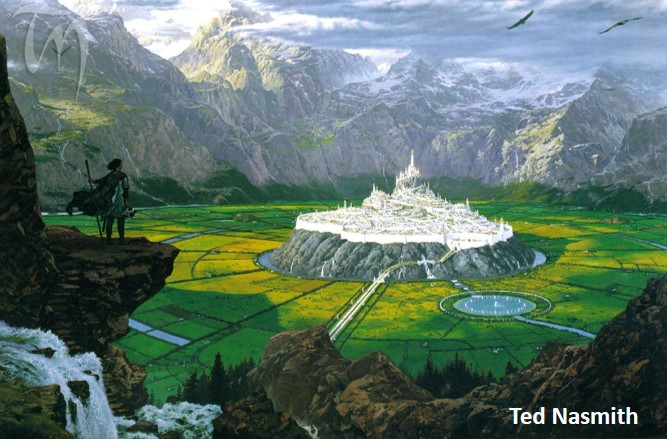
We’re all familiar with the events of the end of the Third Age depicted in The Lord of The Rings books: Frodo, aided by the Fellowship of the Ring and other free peoples of Middle-earth, finally defeated the dark lord Sauron. But what about previous ages, and the rich history that led up to those events? The reality is that there were thousands and thousands of years of trials, tribulations, love, bravery, betrayal, and sacrifice that led to the events of the Third Age.
You’ll find some of the backstory in The Fellowship of the Ring chapter: “The Shadow of the Past,” and even more bits and pieces in “The Tale of Years” in The Lord of the Rings appendices. Other than those two sources, if you haven’t read The Silmarillion or Unfinished Tales – or if you have, but have trouble keeping your Fingolfins and Finrods straight, – you’ll want to read this summary of the First Age before you dive into Middle-earth March Madness voting.
Before we list our 16 most important events of the First Age, let’s start with an overview of the major movers and players.
The Baddies
Morgoth was one of the strongest of the Ainur, if not *the* strongest. He went down a dark path in Valinor Pre-First Age (see our recap of Pre-First Age events here), and knowing his own strength, figured he could dominate Middle-earth. Hint: he was right. Together with his top lieutenant, Sauron, the dragon Glaurung, and a host of Orcs and Balrogs, he strove to dominate, if not eliminate all Elves, Dwarves and Men. He made his home in the fortress of Angband in the north, beneath the towers of Thangorodrim.
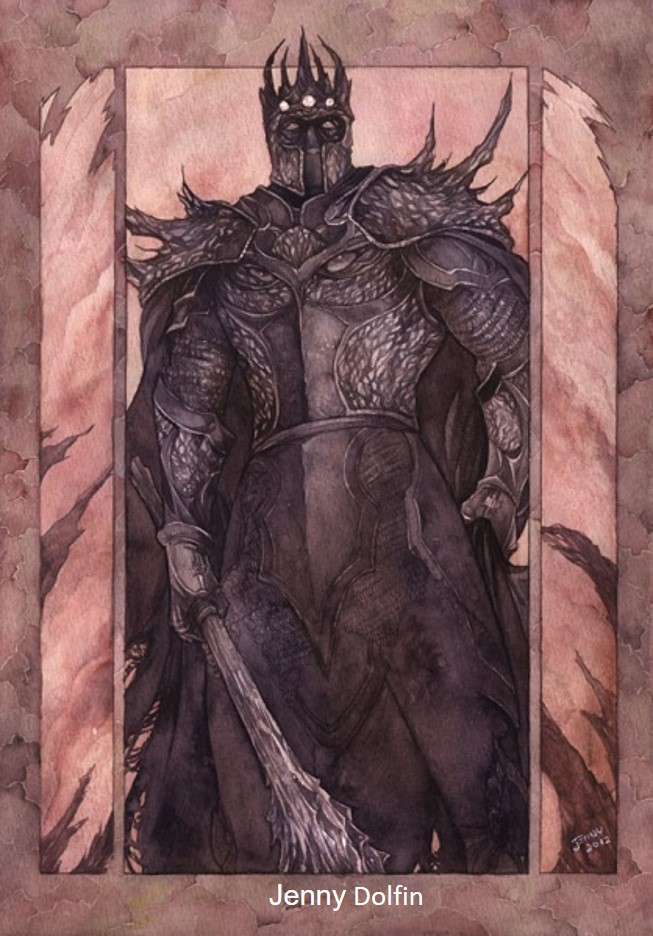
The Goodies
Pre-First Age, the Elves were the dominant race in Middle-earth, and their dominance continued into the First Age. Men appeared in Middle-earth with the first sunrise, the literal dawn of the First Age. Dwarves lived there too, and held commerce with both Elves and Men.
Morgoth had long hated the Elves, thus the Elves built a number of strongholds for protection. The first high king of the Noldor in Middle-earth, Fingolfin, ruled from Hithlum, protected from Angband by a mountain range. His youngest son, Turgon, built the hidden city of Gondolin. With help from the Dwarves, Fingolfin’s nephew, Finrod, built the underground stronghold of Nargothrond. Finally, Thingol, lord of the Sindarin Elves, built Menegroth, the Thousand Caves, also with help from the Dwarves. The forest of Doriath where Menegroth was located was protected by the power of Thingol’s wife, Melian the Maia.
Men mostly lived on farms and in small settlements, and weren’t on Morgoth’s radar until they tired of Orc raids and joined the Elves in several of the key battles of the First Age. Key players for Men included the great warriors Húrin and his son Túrin. Húrin’s nephew, Tuor, married Idril the daughter of Turgon of Gondolin in the first great union of Elves and Men. Beren, another great warrior of Men in the First Age, together with Lúthien, became the second great union of Elves and Men. Thus, their descendants, Elrond and Elros were known as Halfelven. The father of Elrond and Elros was Eärendil the Mariner. It was Eärendil who finally made it to Valinor to plead for help from the Valar, resulting in the ultimate defeat of Morgoth at the end of the First Age.
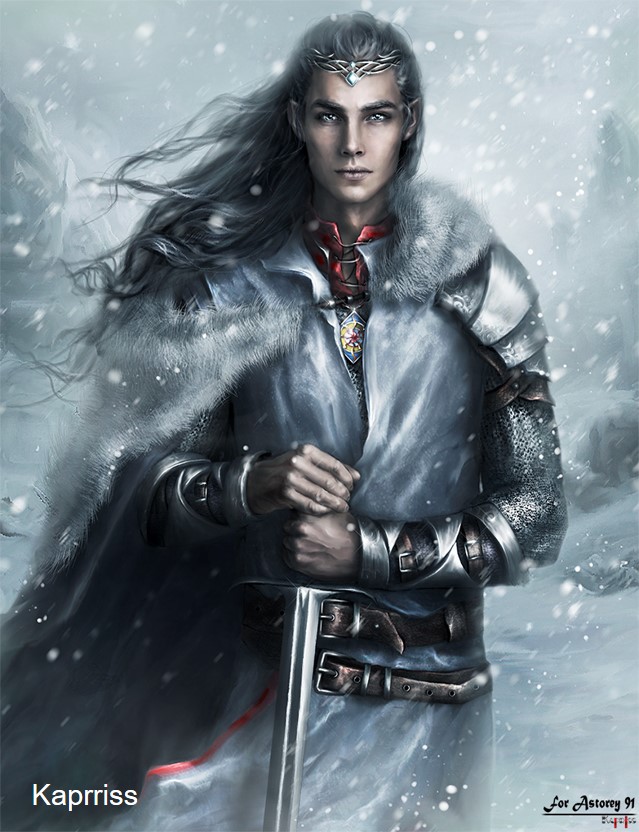
With that summary, let’s delve into at the 16 most important events that comprise the First Age bracket:
The Sun rises & Men awaken (FA 1): to provide light to Middle-earth, a single flower was coaxed from each of the Two Trees before they died. The flower of Telperion became the moon, and that of Laurelin the sun. At the same time, Eru Ilúvatar created the race of Men – who would become integral in all of the events of Middle-earth to follow.
Alliance of all Elves in Middle-earth against Morgoth (FA 20): the wars of the Elves against Morgoth began Pre-First Age and continued into the early First Age. Noldorin and Sindarin Elves of Middle-earth primarily lived in their own societies. However, due to the inability of the Noldor to defeat Morgoth, they quickly realized that their best defense against Morgoth was a united offense.
Turgon builds Gondolin (FA 64 -116): guided by the Vala Ulmo, Turgon came to the hidden valley of Tumladen which was concealed and protected by the Encircling Mountains. He built the city of Gondolin there as a safe haven for his people. Gondolin would be the last Elven realm to endure against Morgoth.
Finrod first meets the Edain (Men) in Ossiriand (FA 310): while on a hunting journey, Finrod encountered Men and ended up staying with them for a while, learning their language and teaching them his. This was the beginning of a great friendship between Elves and the forefathers of Húrin, Túrin, and Beren, who went on to fight heroically with the Elves against Morgoth. It was Finrod who gave his ring to Barahir, father of Beren, as a token of friendship; the ring that would eventually be worn by Aragorn.
Dagor Bragollach (Battle of Sudden Flame) (FA 455): Morgoth had been under siege by the Elves for hundreds of years but had been building his strength in Angband. Morgoth unleashed his full wrath in the form of rivers of flame, the dragon Glaurung, and hordes of Balrogs and Orcs. Men and Elves alike fought valiantly but after many were killed, they eventually fled to various safe havens, giving Morgoth a major victory.
Fingolfin battles Morgoth & is killed (FA 456): Towards the end of the battle of Dagor Bragollach, the great King of the Noldor, Fingolfin, seeing that the battle was being lost, challenged Morgoth to come out and fight mano-a-mano. From one of the most stirring passages of the Silmarillion:
“Thus, he came alone to Angband’s gates, and he sounded his horn, and smote once more upon the brazen doors, and challenged Morgoth to come forth to single combat. And Morgoth came… Morgoth… issued forth clad in black armour; and he stood before the King like a tower, iron-crowned, and his vast shield, sable unblazoned, cast a shadow over him like a stormcloud. But Fingolfin gleamed beneath it as a star; for his mail was overlaid with silver, and his blue shield was set with crystals; and he drew his sword Ringil, that glittered like ice.”
Unfortunately, Fingolfin was bested and perished, but not before giving Morgoth lasting wounds. With his death, his eldest son Fingon became King of the Noldor.
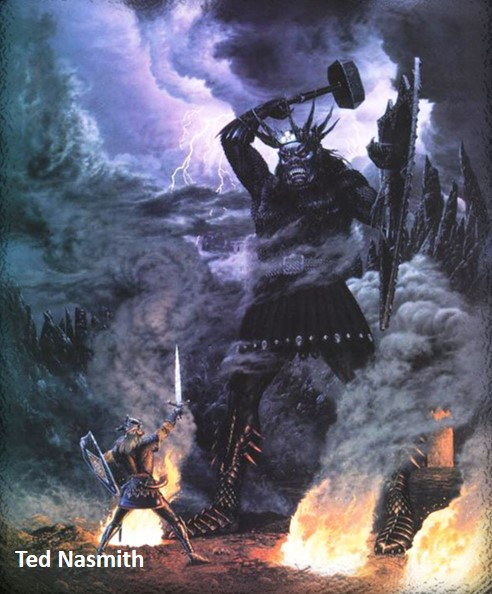
Beren first sees Lúthien (FA 464): After his father, Barahir, was slain by Orcs, Beren became an outlaw hunted by Sauron. Beren’s wanderings eventually brought him to the forest of Doriath, where Turgon and Melian lived with their daughter Lúthien. Beren saw Lúthien dancing in the woods. He was immediately smitten, but Lúthien kept evading him. From Tolkien’s poem, Song of Beren and Lúthien:
Again she fled, but swift he came. Tinúviel! Tinúviel!
He called her by her elvish name;
And there she halted listening.
One moment stood she, and a spell
His voice laid on her: Beren came,
And doom fell on Tinúviel
That in his arms lay glistening.
Beren & Lúthien recover a Silmaril from Morgoth’s Crown (FA466): Lúthien’s father, Thingol, refused to let Beren marry Lúthien until he brought Thingol a Silmaril from the iron crown of Morgoth. When Beren set out on the task he and his companions, including Finrod, were captured by Sauron. When all but Beren had been killed by Sauron’s werewolves, Lúthien came to his rescue riding the great hound Huan. Finally coming in front of Morgoth in Angband, Lúthien sang, putting Morgoth to sleep, and Beren cut a Silmaril from his crown. The two escaped with the help of the eagles, but not before the great wolf Carcaroth bit off Beren’s hand holding the Silmaril. After they returned to Doriath, Thingol finally allowed them to be married.
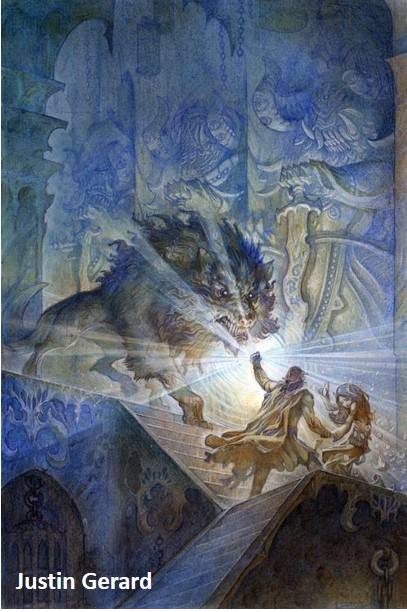
Nírnaeth Arnoediad (Battle of Unnumbered Tears); Fingon slain (FA472): The fifth battle in the wars of Beleriand got its name from the Doom of Mandos: “Tears unnumbered ye shall shed.” It was a union of Elves, Dwarves, and Men to attempt once more to defeat Morgoth. The host was led by Maedhros, a son of Fëanor, and Fingon, son of Fingolfin and now King of the Noldor. Among them fought Turgon, brother of Fingon, and warriors of men including Húrin. Though they fought valiantly, Morgoth once again triumphed with sheer numbers of Orcs, wolves, Balrogs, and dragons including Glaurung. Many perished, including Fingon who was slain by Gothmog the Lord of Balrogs. With Fingon’s death, his younger brother Turgon became High King of the Noldor.
Glaurung invades West Beleriand & sacks Nargothrond (FA 495): dragons were among Morgoth’s deadliest weapons, and the most powerful was Glaurung. The retreat of the hosts that challenged Morgoth at the Nírnaeth Arnoediad emboldened all the servants of Morgoth, including Glaurung, who then led an army of Orcs against the Elven stronghold of Nargothrond. Túrin, son of Húrin led the forces of Nargothrond against Glaurung, but they were defeated. Glaurung put a spell on Túrin, convincing him not to go after the captives and sending him on a useless errand. Glaurung then ruled Nargothrond.
Túrin slays Glaurung (FA499): Glaurung finally met his fate four years later, when Túrin returned and with his sword, Gurthang, slew Glaurung. Unfortunately for Túrin, as part of Morgoth’s curse on Túrin’s father Húrin and all of his children, Glaurung had also put a spell on Túrin’s sister Nienor, making her forget who she was. Túrin had never met her and once they did finally meet, they fell in love and were married. Before Glaurung died, he revealed to Nienor who she really was, and she killed herself. Not long after, also learning the truth, Túrin killed himself with his sword.
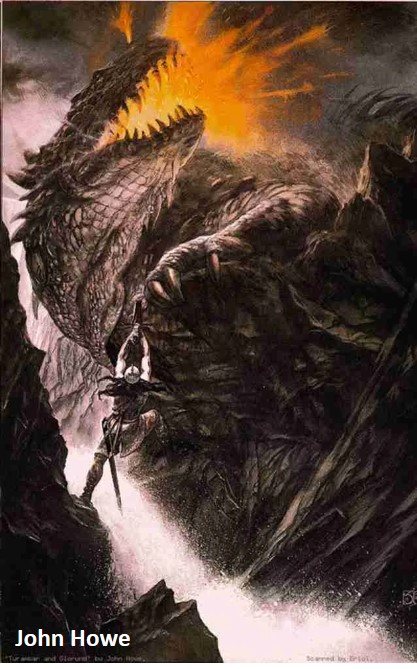
The fall of Gondolin (FA 510): Being well hidden, Gondolin was the stronghold of the Elves to survive the wars against Morgoth. The man Tuor had been guided by the Vala Ulmo to Gondolin, and ended up marrying Idril, daughter of Turgon, now High King of the Noldor. The union was fated as their son, Eärendil , would be the one to reach Valinor and summon the Valar to finally help defeat Morgoth. However, the Elf Maeglin was jealous of Tuor, and betrayed Gondolin by revealing its location to Morgoth. Morgoth’s forces attacked and the city was taken. Many died; however Idril, Tuor and Eärendil, then seven years old, escaped.
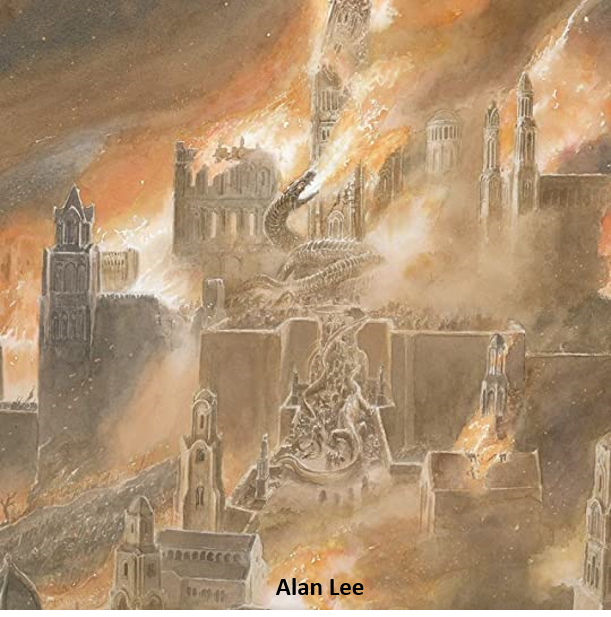
Eärendil & Elwing marry & give birth to Elrond & Elros (FA525, 532): after his escape from Gondolin, Eärendil became the leader of the people of the Havens of Sirion by the sea. Eärendil , who was halfelven, married the granddaughter of Beren and Lúthien, Elwing, who was also halfelven. Their two sons would become important leaders in the Second Age. Because of their heritage, the Valar gave Elrond and Elros a choice as to whether to become part of the Elven race or that of Men. Elrond chose to be counted among the Elves, and went on to found Rivendell in the Second Age. Elros chose the race of Men, and became the first king of Númenor.
The War of Wrath (Great Battle) & destruction of Beleriand (FA587-590): This was the final conflict in the wars of Beleriand. Wearing the Silmaril of Beren (handed down to his wife Elwing), on his brow, Eärendil sailed to Valinor and plead with the Valar to help the people of Middle-earth finally defeat Morgoth. The Valar agreed, but Morgoth had grown so powerful even they were hard-pressed to defeat him. Along with his usual Balrogs, orcs, and wolves, Morgoth unleashed winged dragons for the first time, including the strongest of those, Ancalagon the Black. It was only when Eärendil came with the eagles and slew Ancalagon that the tide turned, and Morgoth and his forces were defeated. The battle was so intense, however, that most of Beleriand was destroyed, forever changing the map of Middle-earth, and many of the Elves left Middle-earth forever, sailing west to Valinor.
The Valar cast Morgoth into the Void (FA 590): After his defeat in the battle, Morgoth fled to the dungeons of Angband, but was found and brought before the Valar. He pled for mercy, but the Valar had finally had enough. They hewed his feet off, bound him with a chain and thrust him through the Door of Night into the Timeless Void. Finally, an end was come to Morgoth in Middle-earth. However, many of his servants survived to make mischief in the Second Age – including at least one Balrog, one dragon, and his lieutenant, Sauron.
Raising of the island of Elenna (Númenor) (FA 590): As a reward to the Men who had helped defeat Morgoth, the Valar raised the island of Elenna and gifted it to them. The realm they established there became known as Númenor, which would become one of the most powerful and influential realms of the Second Age.

Stay tuned for our summary of the Second Age events, coming up! Check out the Pre-First Age events here; and when you’re ready to vote, you’ll find the links here. You can vote one bracket at a time, so it’s possible to vote in Pre-First and First Ages now, and wait until you’ve read the Second Age summary to vote in that bracket. But do vote – the final Grand Champion in this year’s Middle-earth March Madness is up to YOU!


